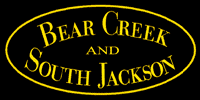 |
 |
 |
 |
 |
 |
Turnouts |
What are the parts of a turnout? A turnout has points, stock rails, closure rails, a frog, guard rails, and switch stand. |
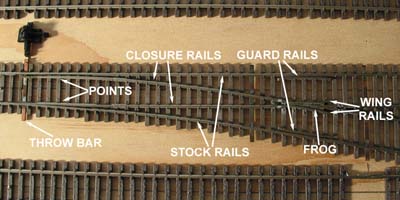 Turnout components. |
What is a lap (or 3-way) turnout? A lap turnout is two turnouts superimposed on top of each other. Some lap turnouts are called three way switches. Because there are three exit routes from a lap (or three-way turnout) it has three frogs (or places where rails cross each other). Railroads prefer not to use special trackwork such as lap turnouts but they will when there is little space available. |
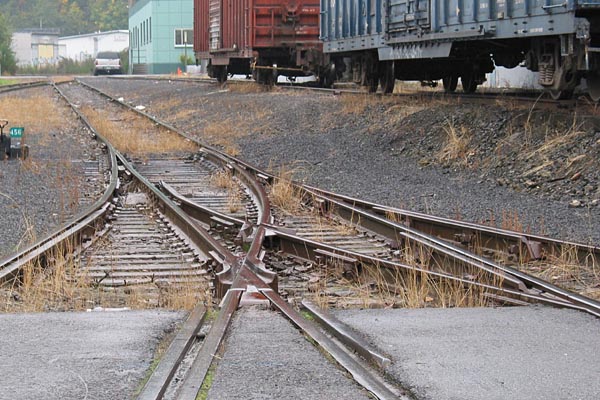 A lap (3-way) turnout |
What is an unguarded frog? A frog usually has guard rails adjacent to it along the stock rails. The guard rails prevent wheels from "picking the point" of the frog as they pass through. They do this by pressing against the back of the opposite wheel. Unguarded frogs have no guard rails. Instead there are little raised wings on the frog which press against the outside of the wheels tread to keep that wheel from "picking the point". Can I model an unguarded frog? The treads on model railroad wheels are too wide and they hang over the outside edges of the rails. Unless you are building with fine-scale track and wheels (such as proto-87 or proto-48) an unguarded frog is not feasible. 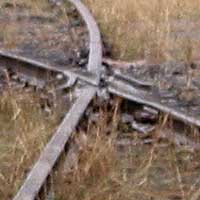 |
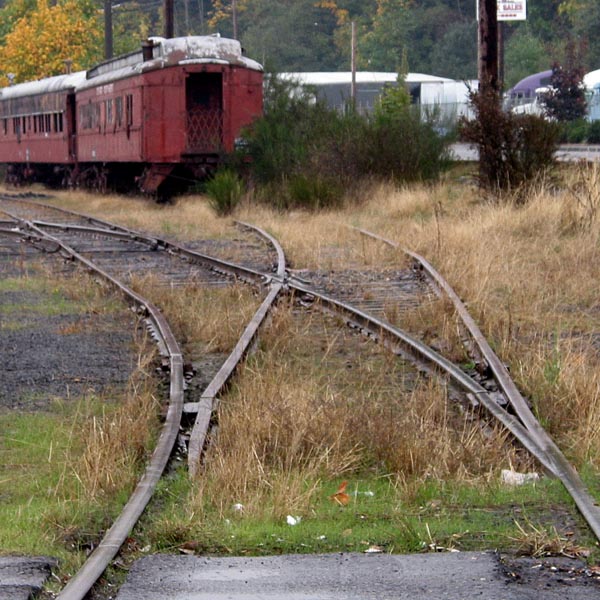 Turnout with an unguarded frog |
What is a DCC friendly turnout? That's the name for a turnout in which the points and adjacent stock rails are at the same polarity. This requires that the turnout frog be isolated from the closure rails. Frogs may be dead (unpowered) or live. A live frog will require that the switch machine for the turnout have a pair of electrical contacts that can be wired to connect the frog to the proper output of the power supply. The chief advantages of a DCC friendly turnout are:
Absolutely. DCC friendly really is a mis-nomer. Perhaps a better name would be "short circuit resistant". How can I tell if my turnouts are DCC friendly?If the points are tied together at their heel and/or toe by a metal bar that turnout is not DCC friendly (or short circuit resistant). DCC friendly turnouts can sometimes be identified by gaps in the rails around the frog. In general older turnouts are not DCC friendly. Another test is to use an Ohm Meter. This device lets you measure the electrical resistance between two points. The measurements are made in "ohms" (named after a pioneer in electrical research). 0 (zero) ohms is a short circuit. An open circuit (no connection) is an inifinitely high number of ohms. With the turnout on your work bench (not connected on your layout), throw it one way. Measure the resistance from each point to its adjacent stock rail. Now throw it the other way and measure resistance from the points to their stock rails again. If all resistance measurements are very close to 0 ohms then this is a DCC friendly turnout. |
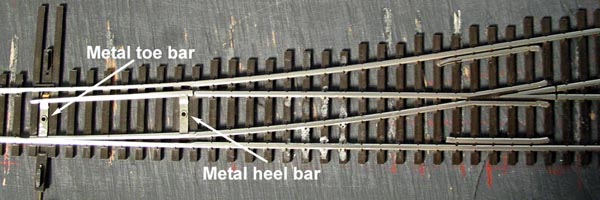 "Unfriendly" turnout - Note the metal heel and toe bars in this turnout. With both points shorted together locos can short circuit by bridging the gape between stock rails and points. 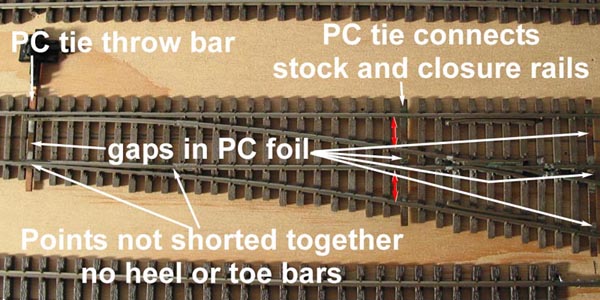 No metal toe bars and an insulated frog make this turnout nearly short circuit proof (except for derailments). Stock and closure rails are joined together with PC ties (red arrows). 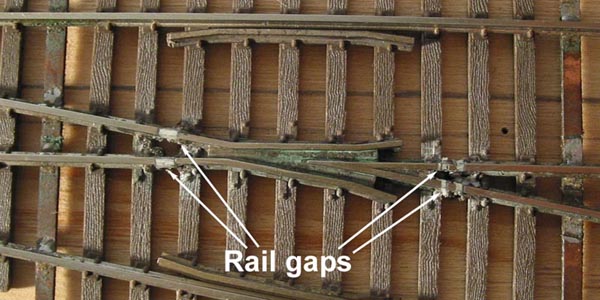 Detail of a DCC friendly frog. Note how that rail gaps isolate it. If an unpowered frog is a problem, power the frog separately through switch machine contacts. |